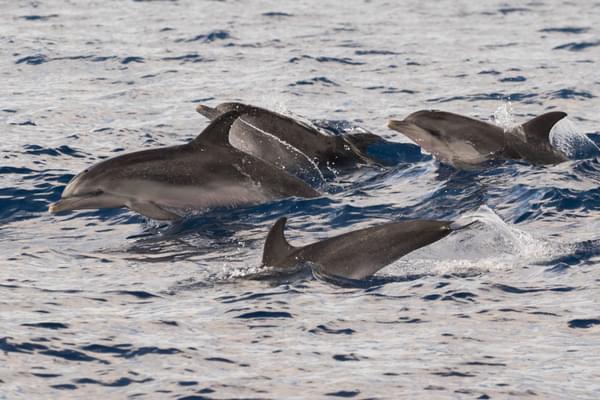Every now and then, science stumbles across something that feels less like a peer-reviewed article in a weighty journal, and more like a poem. A new study has documented humpback whales creating perfectly circular bubble rings — not while hunting or courting, as they’re known to do — but during calm, friendly encounters with humans.
And the implication, at a very simplistic level, is that they might be trying to talk to us.
Researchers at the SETI Institute and other organisations have documented a dozen such incidents around the world, in which humpbacks have voluntarily approached swimmers or boats and released these shimmering underwater rings — like enormous smoke signals beneath the sea. Unlike bubble net feeding (a well-documented hunting technique), these rings aren’t used to trap prey. With these recent findings, there’s no aggressive intent. No sign of food. Just curiosity. Just whales and humans.
The whales are motionless or gently gliding, blowholes up, rings rising slowly through the water. In dispassionate scientific terms, these are “poloidal vortex bubble-rings”— but in simpler language, they’re both beautiful and deliberate. And possibly created for us.
But are they really trying to communicate? Or could it be something more subtle?
Think of a dog that discovers a particular action — a wag, or a head tilt — earns a warm laugh or a scratch behind the ears. It might repeat that behaviour, not to get a biscuit, but because it knows it creates a positive response. The moment itself becomes the reward. It’s not speech, but it is a form of connection.
Maybe the whales are doing something similar. Maybe they’ve noticed that when they blow these rings in our direction, we react — with awe, delight, applause, maybe even a splash of laughter. And so, they do it again. In six out of the nine recorded instances, the human onlookers were described as “loud/boisterous” — clearly expressing themselves positively.
Is that communication? Or just interaction for interaction’s sake?
The researchers behind the study are open to both possibilities. These bubble rings may well be a kind of interspecies “candidate signal” — a term borrowed from the search for alien life. In fact, the study even suggests that observing humpback-human encounters might help us think about how to detect communication from non-human intelligences — on Earth or beyond it.
One of the most striking things about the findings is that this behaviour isn’t limited to a single population. It’s been observed in humpbacks from the North Atlantic to the South Pacific — a global phenomenon, echoing through the oceans.
At ORCA, we believe that when people are given the chance to witness whales and dolphins in the wild, they’re far more likely to want to protect them. That connection is deeply powerful. But what if the animals are reaching out to us at the very same moment? What if they’re observing us, watching how we respond?
If true, then these encounters aren’t just moments of beauty — they’re an invitation. And perhaps we need to think a little more about how we respond.
Main image: Breaching humpback whale (Terry Carne)

The only way we can create safe spaces for whales and dolphins is by monitoring them and that's where our amazing army of citizen scientists come in. If you want to help us to collect data that can be used to hold governments to account join one of our training courses learn.orca.org.uk

